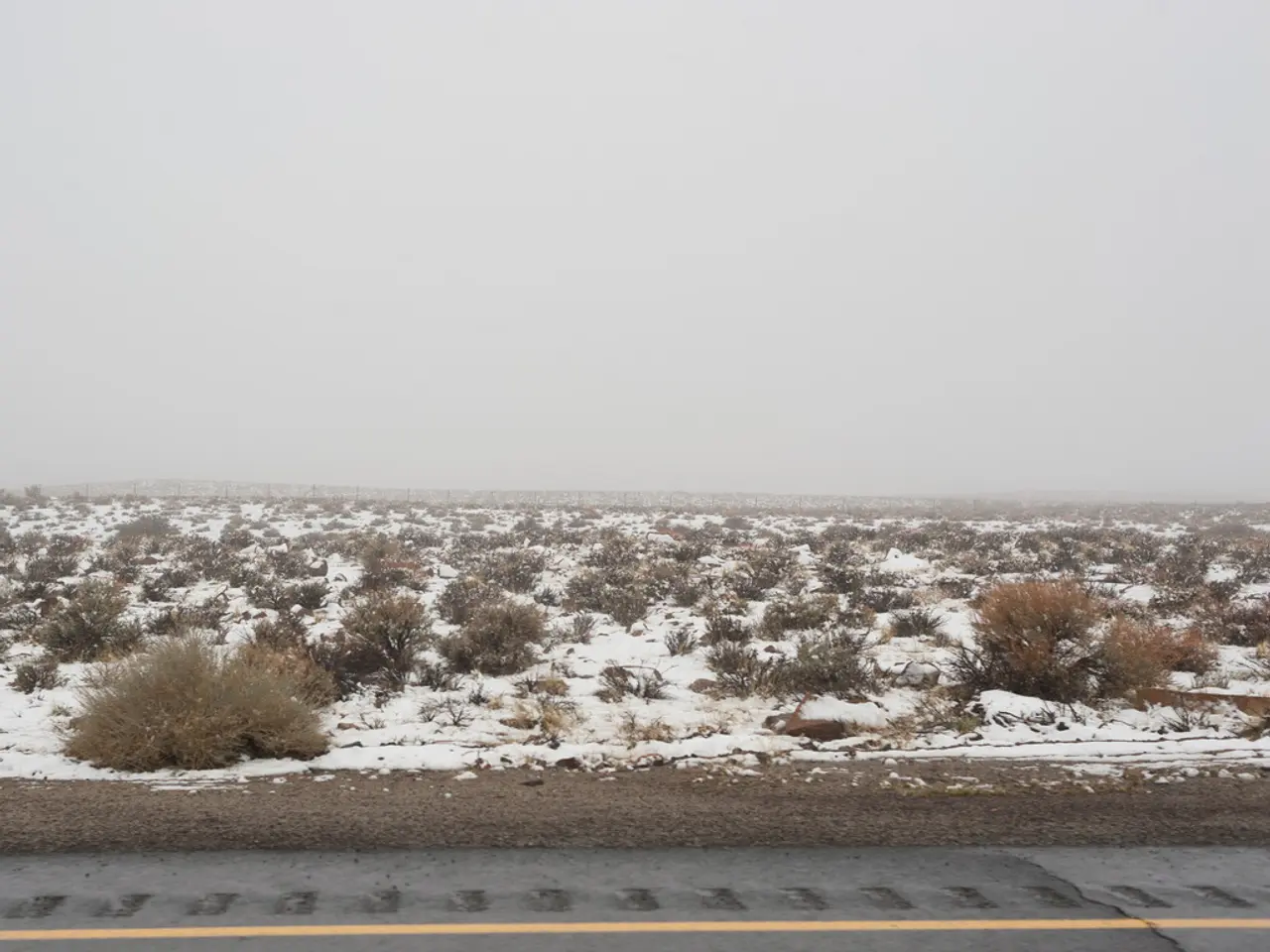Gigantic amounts of water, equivalent to sixty Olympic-size swimming pools, found on Mars's equatorial volcanoes as ice caps.
In a groundbreaking discovery, scientists have found water frost on Mars' volcanoes, thanks to a successful collaboration between the European Space Agency's (ESA) Mars orbiters. The two space probes that played a significant role in this discovery are the Mars Express and the Trace Gas Orbiter (TGO).
Mars Express, operational for over 20 years, has provided detailed imaging and data about the Martian surface, including composition and climate history. Its findings have supported the discovery of water frost on volcanoes. On the other hand, TGO is involved in analyzing atmospheric gases that relate to water and ice presence.
The discovery was made on Olympus, Arsia, and Ascraeus Mons, and Ceraunius Tholus, additional Tharsis volcanoes on Mars. Many of these volcanoes are as big as or much bigger than Mount Everest on Earth. For instance, Olympus Mons stands tall at three times the height of Everest.
The team behind the discovery theorizes that the frost is forming on Mars volcanoes due to the unique microclimate created by the large hollows, known as calderas, at their summits. These calderas were formed by the emptying of magma chambers during past eruptions.
The water frost appears in patches and is present for a few hours around Martian sunrise, then evaporates in sunlight. This amounts to about 150,000 tonnes of water freezing and evaporating during the cold seasons on Mars, equivalent to roughly 60 Olympic swimming pools.
The paper "Evidence for transient morning water frost deposits on the Tharsis volcanoes of Mars" by Valantinas et al. was published in Nature Geoscience. Adomas Valantinas, who was a PhD student at University of Bern, Switzerland, and is now a postdoctoral researcher at Brown University, USA, led the discovery.
This discovery is particularly fascinating because Mars' low atmospheric pressure usually makes its mountaintops warmer than its plains. However, moist air blowing up mountain slopes can still condense into frost, a phenomenon similar to Earth.
Understanding the phenomena on Earth and Mars improves our understanding of basic processes happening not only on our home planet but elsewhere in the cosmos. Finding water on the surface of Mars is significant for both scientific interest and implications for human and robotic exploration.
The European Space Agency's ExoMars and Mars Express missions discovered the water frost on the Tharsis volcanoes, the tallest volcanoes in the Solar System. The ExoMars TGO arrived at Mars in 2016, and its full science mission began in 2018. Mars Express has been orbiting Mars since 2003.
Learning more about the frost could help planetary scientists understand more about water on Mars and the dynamics of Mars' atmosphere. This could pave the way for future discoveries and a deeper understanding of our neighbouring planet.
Read also:
- visionary women of WearCheck spearheading technological advancements and catalyzing transformations
- Recognition of Exceptional Patient Care: Top Staff Honored by Medical Center Board
- A continuous command instructing an entity to halts all actions, repeated numerous times.
- Oxidative Stress in Sperm Abnormalities: Impact of Reactive Oxygen Species (ROS) on Sperm Harm








